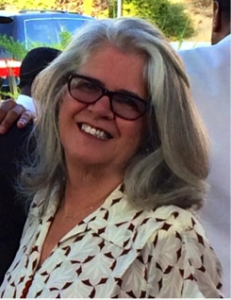Virginia Hamilton started in the workforce field in 1978, at the Stockton EDD office, as an Employment Program Representative (job placement staff). Over the past 36 years, she has held a variety of positions at EDD, at the California Workforce Association, and at the U.S. Department of Labor. Since 2012, she has served as the USDOL Regional Administrator, Employment and Training and Administration, Region 6, based in San Francisco.
Virginia disputes the argument (recently made here) that the new federal workforce legislation, the Workforce Innovation and Opportunity Act (WIOA) and the review done by Vice President Biden will not significantly change the federal workforce system. Based on her years of experience–dating back to CETA in the 1970s and through the JTPA and WIA systems–she sees a new era of job training, based on four key improvements to the workforce system under WIOA.
 1. More sophisticated implementation of sector strategies: The sector strategies model is not a new one—it has been discussed by workforce practitioners for decades. However,Virginia sees WIOA as institutionalizing this strategy, and also as taking it to another level. She explains: “The better WIB s and workforce providers already implement the key elements of sector strategies: understanding the dynamics of a sector, keeping in close contact with employers, tailoring training to the sector needs. WIOA ensures that the strategy is applied widely throughout the system; and that all WIBs heighten their sector tracking and understanding within economic regions.”
1. More sophisticated implementation of sector strategies: The sector strategies model is not a new one—it has been discussed by workforce practitioners for decades. However,Virginia sees WIOA as institutionalizing this strategy, and also as taking it to another level. She explains: “The better WIB s and workforce providers already implement the key elements of sector strategies: understanding the dynamics of a sector, keeping in close contact with employers, tailoring training to the sector needs. WIOA ensures that the strategy is applied widely throughout the system; and that all WIBs heighten their sector tracking and understanding within economic regions.”
- Greater accountability of workforce programs, outside of the WIB system: Under the WIA-funded programs, the WIB system carefully tracked placements and other metrics. In contrast, many of the workforce programs funded under other federal revenue streams associated with housing, transportation and especially with food stamp programs, rarely were held to placement goals. WIOA brings an accountability to federal workforce programs, funded through other revenue streams. She notes that that the Biden report emphasizes a “job-driven” agenda and checklist, against which most federal workforce programs will be held accountable.
3. Workforce Boards as conveners, community leaders and venture capitalists: When Virginia was head of the California Workforce Association, she developed the annual “Meeting of the Minds” conference, to connect WIB directors with thought leaders outside of the public workforce system. In her view, effective workforce planning requires WIBs to understand the broader dynamics of the state and national economies, and to pull together economic participants in the region. She sees in WIOA the role of the WIBs broadening from program operators, to conveners, community leaders and even types of venture capitalists. As Virginia explains, “WIOA shifts the role of WIBs into private sector led boards whose role is to understand the local economy, the industries that drive economic growth and job creation, and to see to it that employers have the skilled worker pipeline they need. In their new role, they are also responsible to ensure that low skilled individuals get access to the training and skills they need to participate in the economy. The role is similar in ways to a venture capital firm, understanding the gaps in a labor market, and funding the solutions those gaps with the goal of economic prosperity.”
4. A new opportunity to redesign public systems with the customer in the center. One constant in Virginia’s career since her Stockton EDD days has been a focus on the job seeker. The workforce system is to get results for the job seeker—and avoid abstractions and ideology. She sees in WIOA a new opportunity to improve the customer focus of the workforce system. According to Virginia, “this is an important time in the evolution of government programs to put the employer and the job seeker in the center of the design of our systems – leveraging multiple federal funding streams, innovating new ways to help people get skills and jobs, and ensuring real access for all Americans. In the states in my region, we are committed to do more than just make changes to comply with the new law. We are committed to making government work for the people we serve.”
Will WIOA truly bring these four changes identified by Virginia to the workforce system? The next years will tell—though any one of these four changes alone would be a significant improvement to the system.

